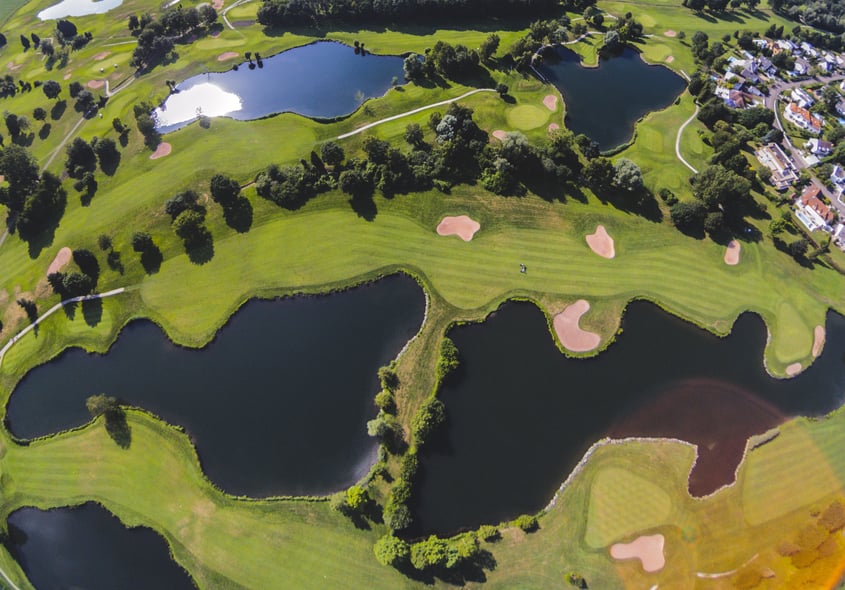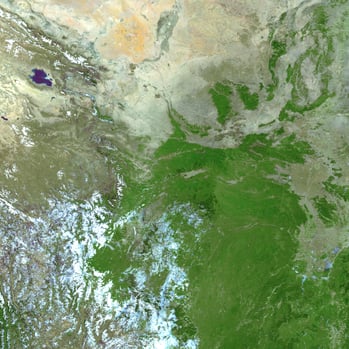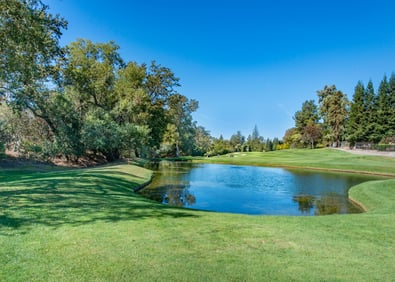
To the average dog-walker, bird-watcher or picnicker, retention ponds are just part of the background. Sure, most people might know something about their usefulness or necessity, and some people might even appreciate them.
After all, a well-designed and maintained retention pond can be very pretty to look at.
But for those of us in the know, retention ponds are an integral part of stormwater management. There are a lot of ways to manage stormwater, but retention ponds, or, I should say, properly managed retention ponds, are a key part of stormwater management.
Operating as both storage for extra water from storms or snowmelt that can overwhelm urban infrastructure, and as a water quality treatment, the design can be fantastic.
There’s only one problem. If not properly designed or maintained (frequent problems when cities are dotted with retention ponds), there can be some pretty serious impacts on water quality.
Keeping Up With Your Retention Pond
Luckily, here at Ecogardens, we’re committed to keeping our urban landscape and ecosystem health functioning together. It’s one of our beloved missions.
If for some reason a retention pond has been neglected, one of the most harmful results are algal blooms – a major water quality issue, and one every pond owner wants to avoid.
So keeping on top of retention pond health is a biggie. In the past, there were a few major boxes to tick when it came to keeping retention ponds functioning well:
- Physical stewardship. We got this one covered. Removal of trash and debris from inlets and outlets, checking and mitigating erosion on the banks of the pond, and caring for the plants around the perimeter. Check.
- Aerating the water. Also a part of retention pond health we encourage and advise. Proper aeration can help minimize algal blooms, which can be a pest in areas where runoff high in nutrients ends up in a retention pond. Also check.
- Improve algal control with chemicals. Uh-uh. Nope. Just Say No.
How to Say No to Harsh Chemicals
Often, pond owners and operators were backed into a corner and needed to act on fast-growing algae quickly. In that case, they would be forced to use chemicals to break down that extra organic matter in ponds.
But even as a short term solution, adding chemicals to your retention pond reverses one of the major goals of a retention pond: improving water quality before it returns to the environment.
Herbicides, chemicals, additives, UV sterilizers and other chemical maintenance controls can do long-term damage to the landscape around your retention pond, as well as to the water quality within the pond itself.
Plus, you’ll have to keep doing it. Year after year. Chemical treatments don’t last forever. In our experience, they are a band aid, but not a solution.
If you’re starting from scratch, a great retention pond design is ideal. Making your pond fit in seamlessly with native plants and animals can make a retention pond beautiful, full of life and function well.
But even if you are starting from scratch or you’re simply frustrated with the lack of non-chemical options and looking for a better idea, you’re in luck.
We have a sustainable, green, long-term, aesthetically pleasing solution we think you’re going to love...
Install a Floating Wetland.
It's that simple.
Properly maintained (chemically-free, thank you very much) Floating Wetlands can last at least 60 years. Imitating the efficiency and efficacy of natural wetlands, Floating Wetlands cleanse pollutants and nutrients from retention ponds, transforming those excess nutrients straight into biological activity.
 On top of that, Floating Wetlands provide diverse habitat for migratory birds, pollinators, fish and local wildlife – all things those dog walkers and picnickers will actively enjoy.
On top of that, Floating Wetlands provide diverse habitat for migratory birds, pollinators, fish and local wildlife – all things those dog walkers and picnickers will actively enjoy.
Floating Wetlands can even help with some of the other regular retention pond maintenance, as they are a natural solution to erosion control.
Our passion for natural, sustainable solutions to that delicate intersection of nature and modern life might have us biased towards Floating Wetlands. But once you get to know all the benefits, including options for ROI from your Floating Wetlands, we think you’ll be just as passionate.
Give us a shout, let’s build an island together, and you’ll always be able to Just Say No to Harsh Chemicals from here on out. Or, at least, for another 60 years.
Schedule a free 30-minute consultation with our team (over a Zoom!) and we'll discuss your unique property, your options, specific do's and don'ts for incorporating a Floating Wetland into your environment, and more.
Together, let’s build an island.

